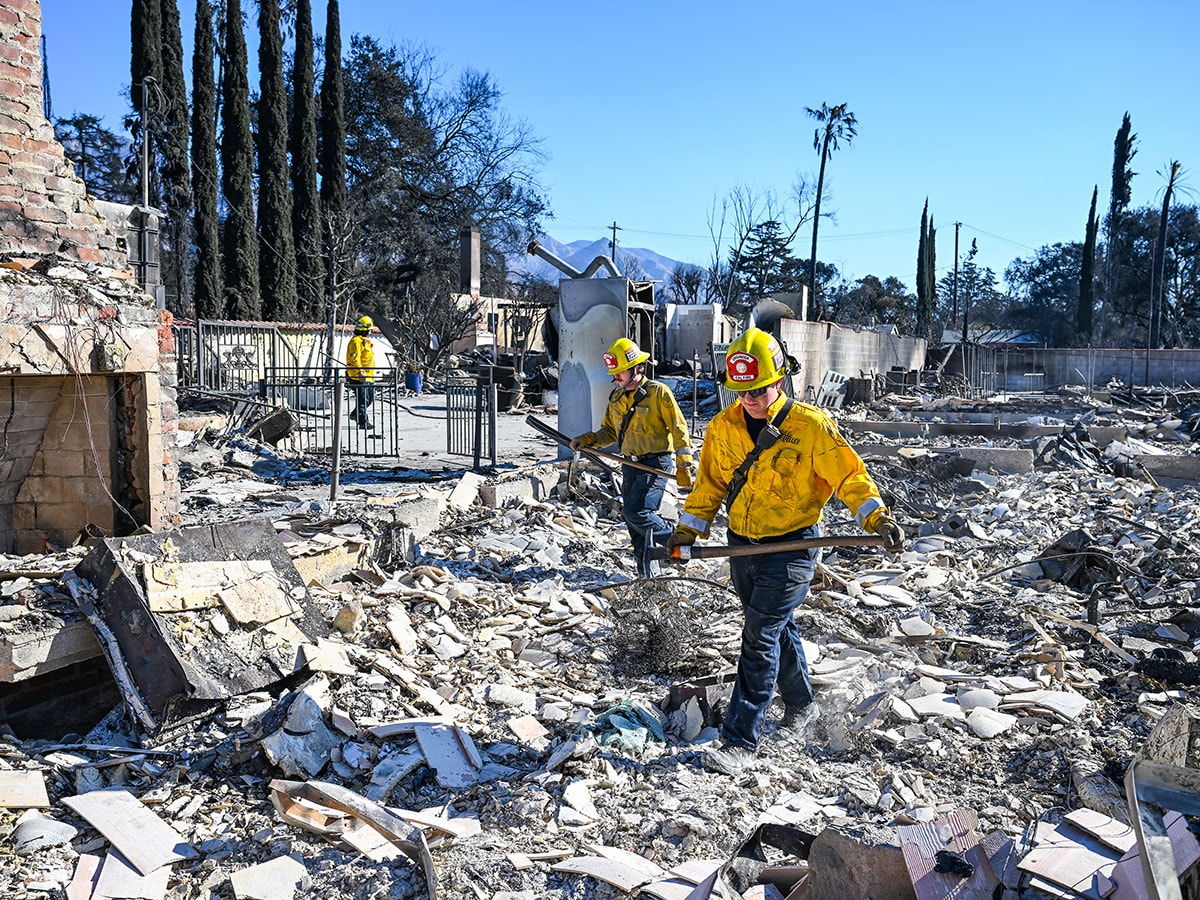 California Fire search and rescue team look through for possible human remains in ashes of burned houses after massive wildfire in Altadena of Los Angeles County, California, United States on January 13, 2025.
California Fire search and rescue team look through for possible human remains in ashes of burned houses after massive wildfire in Altadena of Los Angeles County, California, United States on January 13, 2025.
Image: Tayfun Coskun/Anadolu via Getty Images
The current wildfire season has been rather ruthless for California as the Pacific Palisades and Altadena regions have to bear witness to the destruction, which is leading to the evacuation of around 180,000 residents alongside increasing death tolls. Once hailed as a centre of culture and growth, these regions lie in ruins as the current fires burn the previously safe structures to dust. Los Angeles County Sheriff Robert Luna’s comments regarding the destruction being the effect of the Hiroshima bomb only serve to strengthen the case for quicker and more effective recovery and response efforts.
The Climate Change Factor
Climate change is one of California’s most critical aspects of the wildfire problem. The regions suffering from drought, followed by heavy rains, have formed an environment with much dry material, making the areas much more susceptible to wildfires. Climate scientists concur that warmer winters and summers make debilitating seasonal synoptic storms bud all over the world, and this causes fire destruction in uncontrolled locales. There is an urgent need to reshuffle plans that address climate change and use geoengineering to limit the occurrence of such fires.
What California is witnessing on the wildfire front reflects the more significant issue of the need to adapt or be resilient to changes in the climate. The “historic firestorm” is not simply a situation that seems to have come up in the recent past or necessarily is a crisis: it changes the context of what was natural for a region and how you respond to an emergency or a natural disaster. Instead, because such an effort is lacking, California may be caught in a never-ending cycle of catastrophe.
Wildfires are one of the most destructive phenomena on Earth. They wreak havoc on almost everything that stands in their way, killing both nature and people in the process. The Earth has witnessed an alarming increase in the number of wildfires that are occurring across the globe every year. They can be initiated for any reason, such as dry lighting due to droughts, arsonists, or even people accidentally starting them.
Human beings are also responsible for aiding wildfires in these modern times. The combination of global warming and deforestation fuels uncontrollable blazes. As previously noted, dry vegetation supports the combustion process, as does extremely hot weather, which can quickly start a wildfire. It’s evident that fires lead to loss of life, and thousands of people are displaced across the globe. Data suggests that global warming is the primary cause of these fires in many regions like California, where temperatures have reached extremes. We must think of ways to combat global warming to lessen the damage to our plants and Earth.
Eyeing the Dark Side: The Disaster of Wildfires and Insurance
Due to the worsening situation on the ground, Governor Gavin Newsom has called upon the services of the National Guard, and this brings about unsettling questions as to whether or not there are resources available as well as the level of preparedness that exists. In California, structures need to be put in place to deal with the aftermath of the wildfires and, instead, to hamper their occurrence more efficiently. This entails putting money into various fire management, infrastructure enhancement, and crisis-informative communication strategies, which are critical to protecting susceptible populations.
[This article has been reproduced with permission from the Indian School of Business, India]
